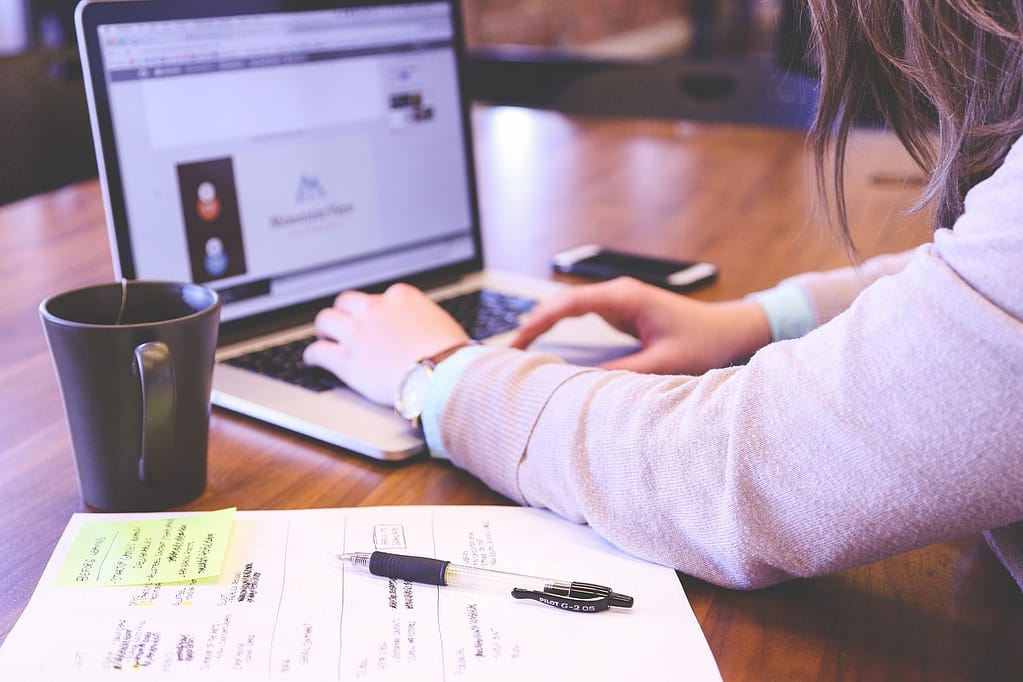When driving somewhere far away, have you noticed how time seems to go by faster? It’s strange, but an hour’s drive can feel like 15 minutes. However, when you’re a passenger in a car, it feels like time is moving slower.
This phenomenon is due to what psychologist Mihaly Csikszentmihalyi calls the flow state.

You’ve probably heard other names for it, such as “locking in,” “being in the zone,” or “zoning in.”
As previously mentioned, you immerse yourself so much in driving that you subtly enter a flow state. You become so focused on the car in front of you, how fast you’re moving, and the buildings you’re passing that you forget how much time has passed.
What is a flow state?
Flow state occurs when we immerse ourselves in an activity so much that we lose track of time. Even if there was a financial or reputable reward, our focus is on the task rather than what we’ll gain. Entering flow alleviates stress, boredom, and anxiety because of the joy we find in our work. You enter a calm and peaceful state because you feel your worries slowly disappearing.

Understanding flow is essential because that’s when we’re at our most focused, productive, and joyous peak. There are many productivity techniques, but flow is the necessary ingredient to help you excel in these techniques. By entering a flow state, we’re more likely to get more sh*t done and reduce time from being wasted.
What are the benefits of a flow state?
Aside from the intense and laser-focused concentration, there are many health benefits of flow. Some of them are:
- Lower stress
- Elevated levels of happiness
- Reduced risk of depression
Among the valuable health benefits, many external benefits result from flow. Some of them are:
- Greater work output
- Saves time
- Teaches you the disciplinary mindset
How do you enter a flow state?
Achieving flow isn’t a walk in the park and can’t be forced upon us. There are tactics we need to adopt to guide us into that flow state. Becoming more effective in entering flow is just like learning any skill. Consistent practice is necessary to get better.
In today’s article, we’ll be discussing some prominent strategies to walk you into that flow state.
1. Make sure you like what you’re doing
As straightforward as it sounds, most of us are guilty of doing something we don’t like. Family, friends, or social media have pushed us to pursue a career or hobby that makes a lot of money, although we aren’t passionate about it.

For example, our family may have pressured us to pursue a medical or engineering degree because it pays well. Although that may be true, should we invest our time into something we don’t like? If you have an upcoming final for your engineering class, you’ll find studying impossible because your field of study doesn’t align with your interest.
If you feel like it’s too late to shift direction, you must understand that the more you do something you don’t like, the more you’re slowly killing yourself. You’re more likely to have greater focus and excel in a field if you keep your eyes on something you like.
2. Distractions, distractions, distractions
As you minimize distractions, you’re more likely to maintain that flow state. Something small, such as a text message from a friend, will temporarily knock you out of the flow state you were already in. Returning to that flow state becomes harder because your entire focus shifted elsewhere, even though it was less than a minute.
The idea is similar to riding a bicycle uphill. To reach the top of the hill, you have to keep pedaling. If you stop for a second to take a selfie or a sip of water, you’ll fall backward, visit the ER, and piss off your insurance company.
The most common source of distraction we have today is our phones; therefore, it’s optimal to turn your phone off, put it on airplane mode, or not disturb it. If you find yourself checking your phone consistently, it’s always a good idea to leave your phone in another room.
With the idea of flow, it’s a better idea to keep your focus centered on what’s in front of you and prevent distractions from obstructing you from entering a flow state.
3. Focus on this one thing entirely
As mentioned, distractions are the biggest killers preventing us from reaching flow. To achieve a flow state, we must focus on what’s in front of us and abstain from multitasking. Multitasking has its pros and cons, but when it comes to flow, you have to commit yourself to one thing.
Going back to our driving metaphor, the fastest way to get from point A to point B is by driving on one freeway. A road trip from LA to NYC will take 10x longer if you drive through neighborhoods instead of taking the highway.

Srinivas Rao from Medium.com wrote, “If you’re completely focused on one thing, you’ll not only be able to do that thing faster, but the quality of the work will be significantly higher.”
If you jump from one area to another, you’re more likely to make mistakes and miss important details, which could keep you from reaching a flow state. Other tasks may cause us to multitask, but so do distractions. As a result, it’s always a good reminder to eliminate as many distractions as possible.
4. Take breaks
A car, or even an electric car, can only go so far before it needs another tank of gas or a charged battery. The same applies to how our brains work.
We can only work for so long before our brains become agitated and demand a break. Continuing to work past our limit will be counterproductive, as we start producing low-quality work and are more likely to make mistakes.

In our modern society, we tend to be anti-break takers because we view it as inefficient—this is a myth that even I forget sometimes. However, studies show that giving ourselves periodic breaks helps us be more productive. It gives our brains time to reset and prepare, helping us spark creativity and increase work efficiency.
It’s also important to recognize the type of breaks we give ourselves; some are good, while some are bad. Taking a break is a broad topic because we all have different definitions of a break. When I say you should take a break, that doesn’t mean you should smoke or go shotgun a beer. The best break you can give yourself is when you step away from work and give your brain time to recharge.
5. Prepare and organize
Failing to prepare for a flow state is the same as refusing to study for an important exam. When you prepare, reaching flow will become smoother because you’re less likely to run into inconveniences. Forgetting to charge your laptop or bring your books is avoidable when we take the time to prepare.

Failing to prepare can additionally throw us off guard, as it causes our focus to shift temporarily. As a result, we make it more of a hassle to address these inconveniences than it should be. With just five minutes of preparation, we can better fall into flow, and we’re more likely to remain in that state.

The best way to prepare for flow is by creating a list of to-do’s and knowing what you plan on doing. By doing so, you prevent yourself from forgetting what to do, which could throw you off balance as you reach flow.
6. Redirect your focus
Flow is similar to meditation because our mind tends to wander. Mind wandering is a common habit we often don’t realize we’re falling into. It’s common, especially when you’re new to flow because maybe you haven’t had laser-focused concentration on something for a long time.
Whenever you have irrelevant thoughts, redirect your focus back to what you’re doing. Returning our focus helps minimize the time we waste thinking about nonsense and maximize the time we spend working. It takes practice, but by building this habit, you get better at it as you progress.

Whenever you start thinking about something another task, maybe sending an email or doing homework for another class, it’s a good idea to write it down. Then, you can address these tasks after you’ve finished working instead of trying to hold onto them. That way, you aren’t bombarding yourself with to-do’s, which could cause you to multitask.
7. Do it first thing in the morning
Studies show that we’re more productive in the morning than later in the day. We’re typically filled with more energy in the morning because we’ve just woken up from sleep. As we go about our day, going to class or driving home from work, our energy from the morning wears off.

The immense level of energy we have in the morning makes it more optimal to have our flow state in the morning. Additionally, we tend to be exhausted later in the day than in the morning because of life’s responsibilities, which could impact our mood in wanting to work.
8. Prioritize your health
“If you look good, you feel good, and if you feel good, you play good.”
– Deion Sanders
When you feel good, you typically perform better because your energy carries into the work that you produce. The small things, including 8 hours of sleep, a healthy diet, and minimum stress, seem insignificant but play a crucial role in our work performance.

We recommend avoiding eating a full-course meal before you enter a flow state because it can affect your concentration. After eating plenty of food in one sitting, falling into a food coma sounds like the ideal next step. Our bodies are constantly digesting, so if we put in even more food, we’ll be more focused on resting than working.

